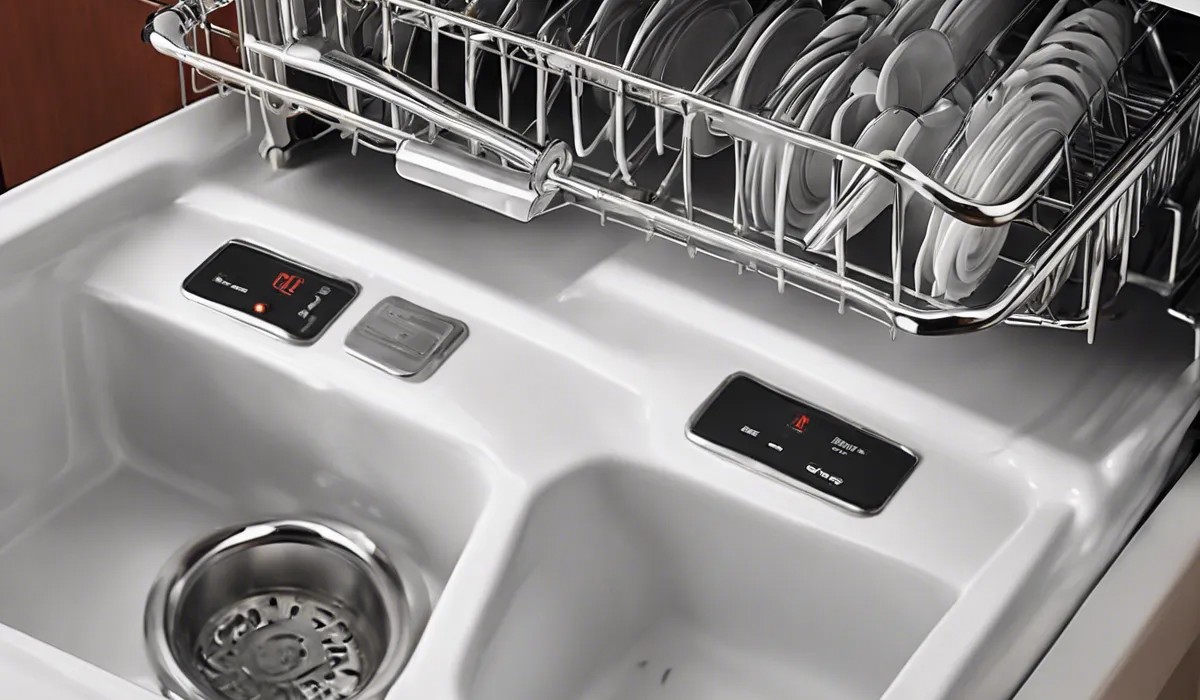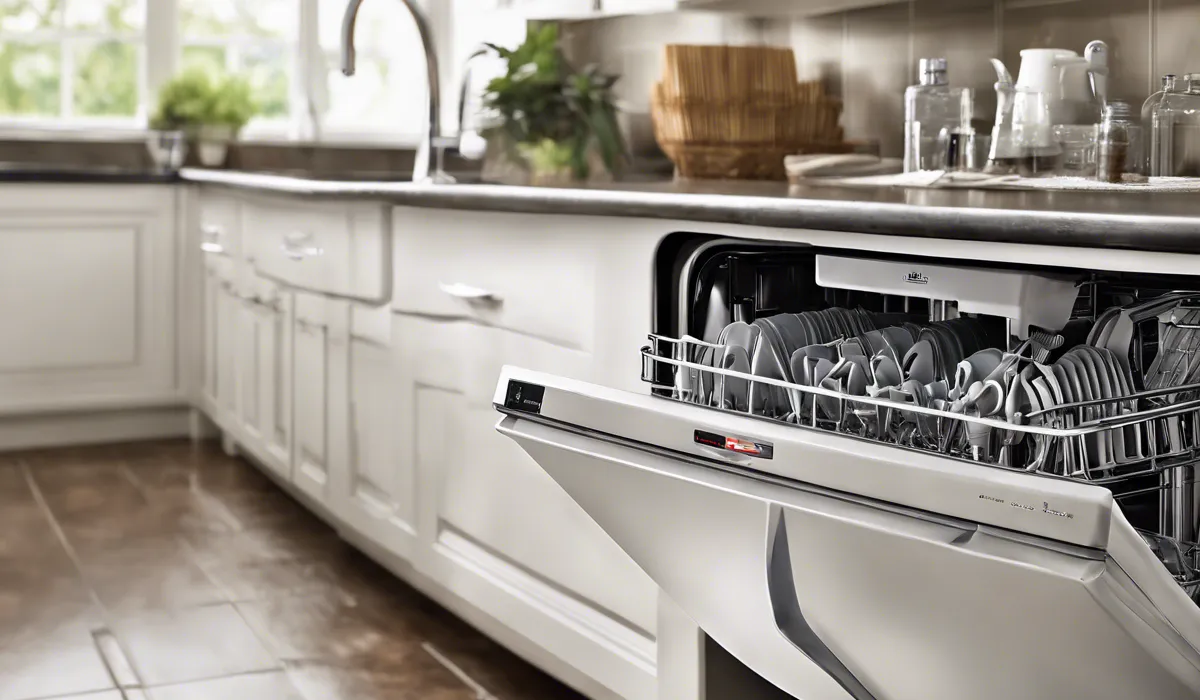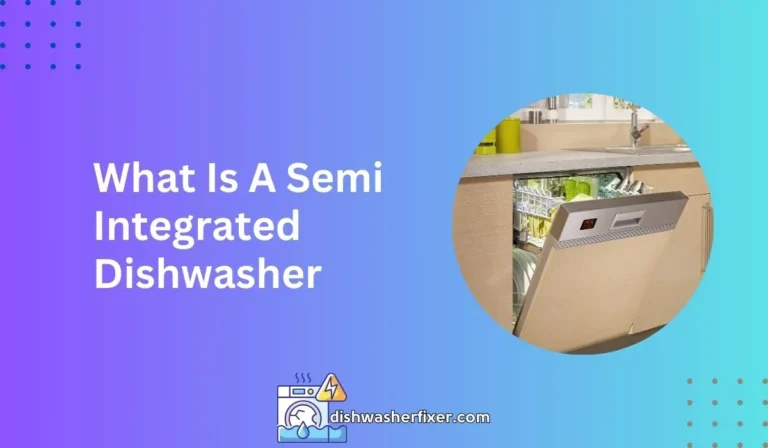Where is Dishwasher Drain Hose? Easy Guide to Locate It
The dishwasher drain hose is typically located at the base of the dishwasher, connecting to the sink drain or garbage disposal underneath the kitchen sink. It’s often a flexible plastic or rubber tube, routed either through cabinetry or along the wall.
Locating the Dishwasher Drain Hose

Identifying the Dishwasher’s Location
Before you can locate the drain hose, you need to find your dishwasher. Usually, it is installed next to the kitchen sink cabinet.
Once you’ve identified the dishwasher, remove any items from under the sink to get a clear view of the area where the dishwasher drain hose might be routed.
Routing for Dishwasher Drain Hoses
The standard routing for a dishwasher drain hose typically involves a path from the dishwasher’s base to the kitchen sink’s drain plumbing.
The hose may run through cabinetry or along the wall, connecting to the sink drain or garbage disposal.
It’s important to note that the hose should have a high loop or be attached to an air gap fitting to prevent backflow of dirty water into the dishwasher.
Finding the Drain Hose in Various Models
Dishwasher models may vary, but you can often find the drain hose at the back or side of the unit. In some cases, it may be concealed by a panel.
For integrated dishwashers, you may need to refer to the manufacturer’s instructions to understand the specific routing for the model. Look for a flexible tube, which is typically made of plastic or rubber.
Tips for Locating the Drain Hose
If you are unsure about the hose location, consult the dishwasher’s user manual. The manual should have a diagram showing where the hose is connected.
Additionally, you can search for the model number online to find more detailed instructions or videos that show the exact location for your specific dishwasher model.
Accessing and Inspecting the Drain Hose

Accessing the Dishwasher’s Internals
To access the drain hose, you will often need to remove the kickplate or toe panel at the bottom front of the dishwasher.
Use a screwdriver to take off the panel, revealing the hose and other internal components. Make sure the dishwasher is off and unplugged before you begin this process.
Safety Precautions
Before touching the drain hose, ensure that the dishwasher is turned off and disconnected from the power supply. Also, turn off the water supply to avoid any potential leaks or spills.
Always wear gloves when handling the internals of the dishwasher as edges can be sharp and you may encounter debris or buildup.
Inspecting the Drain Hose
Visually inspect the hose for kinks, cracks, or clogs. A hose that is bent or pinched can restrict water flow, leading to drainage issues.
If the hose is damaged, it will need to be replaced. You can also try to feel for any obstructions within the hose by gently squeezing along its length.
Checking for Clogging or Damage
If you suspect a clog, you can detach the hose from the dishwasher and sink or disposal.
Have a bucket handy to catch any water that may spill out. Once removed, you can run water through the hose to clear any debris. If water doesn’t flow freely, there may be a clog that needs to be removed.
Maintenance and Troubleshooting

Routine Maintenance Practices
Maintaining a dishwasher drain hose involves regular checks for kinks or clogs. Every few months, inspect the hose and clean it if necessary.
You should also run a dishwasher cleaner through a cycle to help remove buildup from the hose and the rest of the dishwasher’s system.
Troubleshooting Common Issues
If your dishwasher isn’t draining properly, check the drain hose first. Ensure that it’s not kinked or crushed.
If the hose is clear, the problem may be with the sink’s drain or the garbage disposal. In some cases, clearing the garbage disposal or the sink’s P-trap can resolve drainage issues.
When to Seek Professional Help
If you’ve performed routine maintenance and troubleshooting but still encounter problems, it may be time to seek professional help.
A licensed plumber can diagnose and fix issues that are beyond basic maintenance, such as deep clogs, complex leaks, or replacing damaged parts.
Professional Assistance for Drain Hose Problems
For persistent or complicated issues with your dishwasher drain hose, enlisting the help of a professional can save you time and prevent further damage to your dishwasher.
A professional will have the tools and expertise necessary to quickly and effectively resolve the problem.
FAQs About Dishwasher Drain Hose Location
Where is the dishwasher drain hose typically located?
The dishwasher drain hose is usually found at the base of the dishwasher, connecting to the kitchen sink drain or garbage disposal unit underneath the sink.
How can I access the dishwasher drain hose?
To access the dishwasher drain hose, you may need to remove the kickplate or toe panel at the base of the dishwasher, or possibly look under the kitchen sink where it connects to the drainage system.
Is the dishwasher drain hose connected to the sink or the garbage disposal?
The dishwasher drain hose can be connected to either the sink drain directly or to a garbage disposal unit, depending on the plumbing configuration in your kitchen.
What does a dishwasher drain hose look like?
A dishwasher drain hose is a flexible plastic or rubber tube, often corrugated, and can vary in color but is typically black or white.
Can the dishwasher drain hose be routed through cabinets?
Yes, the dishwasher drain hose may be routed through cabinetry or along the wall to connect to the kitchen sink’s plumbing.
Final Thoughts
The dishwasher drain hose is found at the dishwasher’s base, connecting it to the kitchen sink’s drain system or garbage disposal.
It is usually made of a flexible material like plastic or rubber and can be routed through cabinets or along the wall, ensuring wastewater is efficiently expelled from the appliance.





